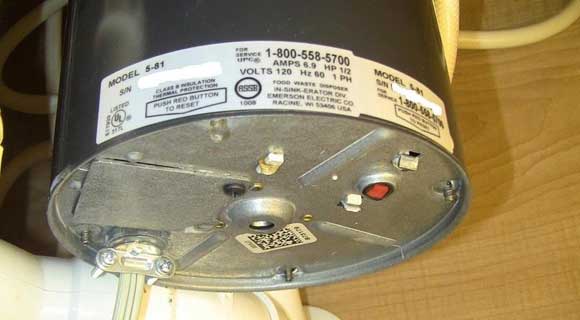Everyone maintains their personal idea about Garbage Disposal Leaking From Bottom.
:max_bytes(150000):strip_icc()/leaking-garbage-disposal-2718868-hero-4da643e1102d4368b91a18864ef5778c.jpg)
Garbage disposals are crucial kitchen area appliances that assist in disposing of food waste effectively. Nonetheless, a leaking garbage disposal can be a discouraging and unpleasant problem to take care of. The good news is, numerous leaks can be taken care of easily with a couple of basic actions. In this article, we will certainly go over how to fix a dripping waste disposal unit successfully.
Introduction
Waste disposal unit are mounted under kitchen area sinks and are created to shred food waste right into smaller sized pieces, allowing it to go through the pipes system conveniently. While these devices are typically trusted, leakages can happen over time due to damage, loose links, or damage to the device.
Usual Reasons For Leakages in Trash Disposals
Worn Seals and Gaskets
Seals and gaskets play a crucial duty in avoiding water from dripping out of the waste disposal unit. In time, these parts can deteriorate, causing leakages around the disposal unit.
Loose Connections
The links in between the waste disposal unit and the pipes system can become loose in time, triggering water to leakage out throughout procedure.
Splits or Openings in the Disposal Device
Physical damages to the waste disposal unit, such as splits or holes in the real estate, can additionally cause leaks.
Determining the Resource of the Leakage
Before attempting to take care of a dripping garbage disposal, it is important to determine the resource of the leakage. This can generally be done with visual assessment or by conducting simple tests.
Visual Assessment
Evaluate the garbage disposal unit carefully for any type of indicators of water leak. Pay attention to locations around seals, gaskets, and link points.
Testing for Leakages
One means to evaluate for leakages is by running water via the disposal device and looking for any type of visible indicators of leak.
Tools and Materials Needed for Dealing With a Leaking Garbage Disposal
Prior to starting the repair process, gather the needed devices and products, consisting of a screwdriver, flexible wrench, plumber's putty, replacement seals or gaskets, and epoxy or patching material for repairing cracks or holes.
Step-by-Step Overview to Dealing With a Dripping Waste Disposal Unit
Switch off the Power
Before attempting any type of repair work, guarantee that the power to the garbage disposal device is switched off to avoid the risk of electrical shock.
Find the Leak
Recognize the precise location of the leakage and figure out the cause.
Tighten Links
Use a wrench to tighten up any type of loosened connections in between the disposal system and the pipes system.
Change Seals or Gaskets
If the leak is because of used seals or gaskets, remove the old elements and replace them with new ones.
Patching Fractures or Holes
For cracks or openings in the disposal device, use epoxy or a suitable patching product to secure the damaged location.
Evaluating the Waste Disposal Unit After Repair Service
As soon as the repair is complete, check the waste disposal unit by running water via it to make certain that the leak has been dealt with.
Preventive Maintenance Tips to Prevent Future Leaks
To prevent future leaks, it is necessary to carry out regular maintenance on your garbage disposal. This consists of maintaining it clean, avoiding placing non-food things or difficult objects down the disposal, and periodically looking for leakages or other concerns.
Final thought
To conclude, fixing a dripping waste disposal unit is a reasonably straightforward procedure that can be finished with basic tools and materials. By following the actions described in this write-up and practicing preventative maintenance, you can keep your waste disposal unit in good working condition and prevent pricey repair work in the future.
What to Do About a Leaking Garbage Disposal
A leaking garbage disposal often goes unnoticed until you confront a sopping cabinet, a foul-smelling puddle, or an audible drip-drip-drip from the unit. The fix can be frustrating, too, because the leak can stem from a number of components in the system. Fortunately, with a little sleuthing, you can zero in on the leak and—depending on the exact location—stop the icky oozing and repair the component that caused it. Worst case scenario, if it turns out that the garbage disposal must be replaced, installing a new one is a reasonable do-it-yourself task for those with basic plumbing skills. Read on to keep the cash you’d otherwise hand over to a pro.
Prepare to find the leak
Prior to testing the garbage disposal for leaks, unplug it at the wall outlet and turn off the power from the breaker box to prevent electrical shock. Then insert a watertight sink stopper into your sink drain and wipe the unit dry with a clean cloth. In any handy container, mix a few drops of food coloring into a few cups of water, and pour the dyed water onto the sink stopper to help you locate the leak.
Investigate the source
the top, where the disposal meets the sink drain the side, where the dishwasher hose or main drain pipe connects to the disposal or the bottom of the unit Inspect each of these locations while gliding a light-colored rag over the unit; the dyed water will readily show on the rag and reveal the location of the leak. If a leak isn’t immediately apparent, remove the sink stopper and pour a few more cups of dyed water down the sink drain, then check for leaks again. Leaks near the top of the unit are more likely to show themselves while the sink is plugged, while side and bottom leaks are more noticeable while the sink is unplugged.
The metal sink flange that sits directly inside the sink drain is typically sealed around the top with plumber’s putty (a clay-like sealant) and then secured from under the sink with bolts. If the plumber’s putty deteriorates, or the bolts loosen, the flange can no longer form a watertight seal between the sink drain and the disposal—which could cause a leak at the top of the unit.
To reseal the leaky flange, you must first detach the garbage disposal. Start by loosening the screws securing the main drain pipe to the disposal, then loosen the screws in the metal clamp securing the dishwasher hose to the disposal and detach the drain pipe and dishwasher hose from the disposal. Loosen the screws in the mounting ring that connects the disposal to the metal mounting assembly beneath the sink, then pull down the disposal and carefully set it on a clean, dry surface. Loosen the bolts in the mounting assembly with a wrench, then pull down the mounting assembly and set it near the disposal.

I recently found that post on Garbage Disposal Leaking From Bottom when doing research the web. Sharing is good. You just don't know, you may just be helping someone out. Thank you for your time invested reading it.
Schedule Appointment
 Kenan Thompson Then & Now!
Kenan Thompson Then & Now! Raquel Welch Then & Now!
Raquel Welch Then & Now! Shannon Elizabeth Then & Now!
Shannon Elizabeth Then & Now! Bernadette Peters Then & Now!
Bernadette Peters Then & Now! Robin McGraw Then & Now!
Robin McGraw Then & Now!